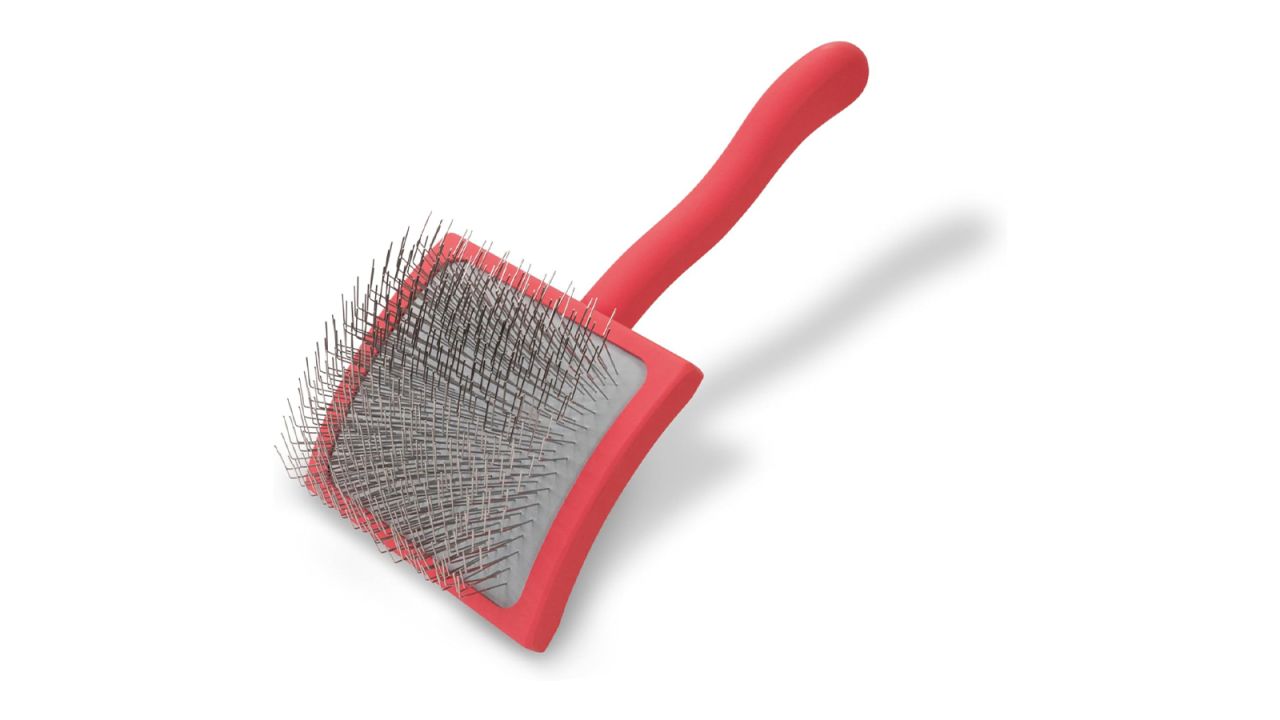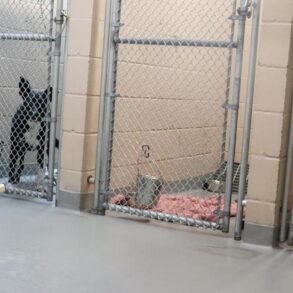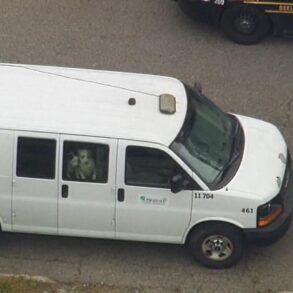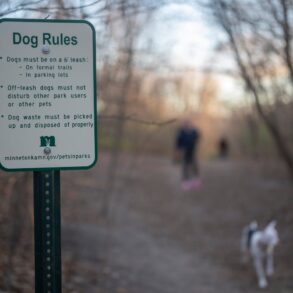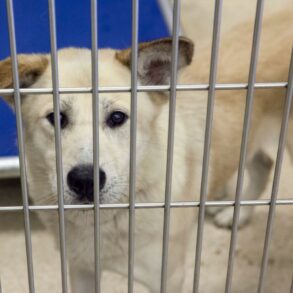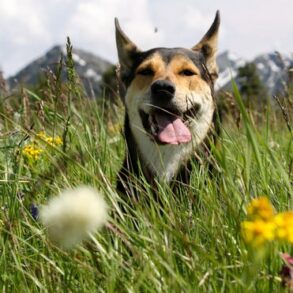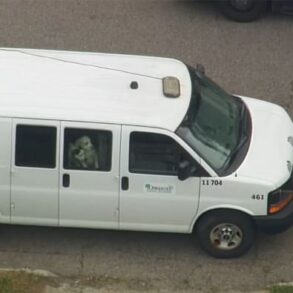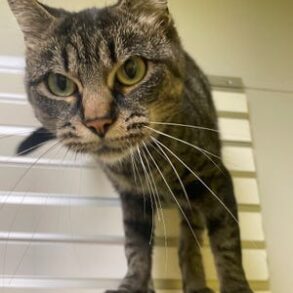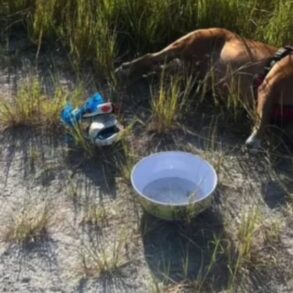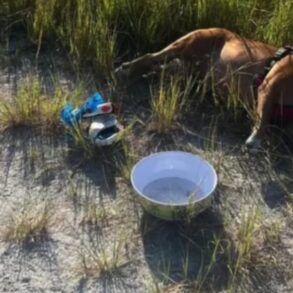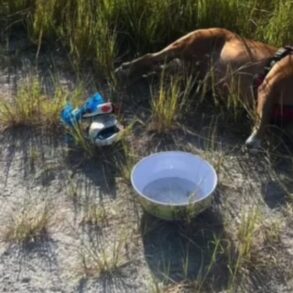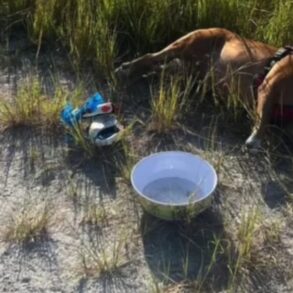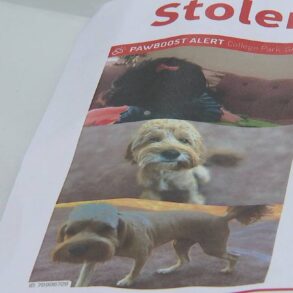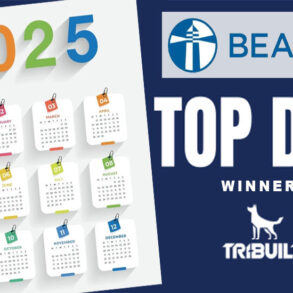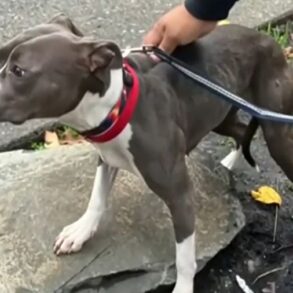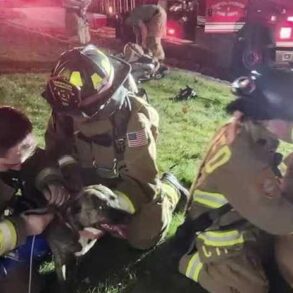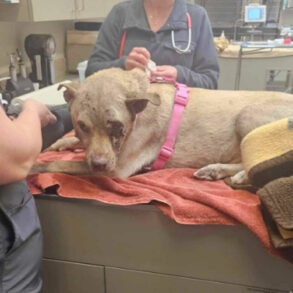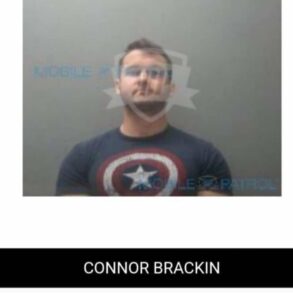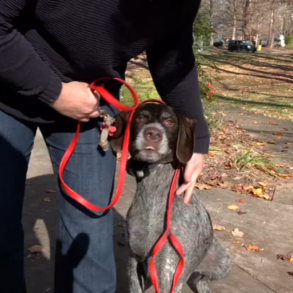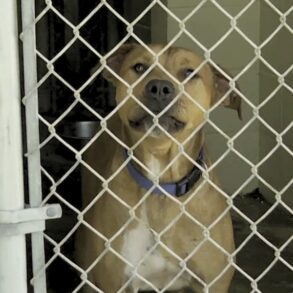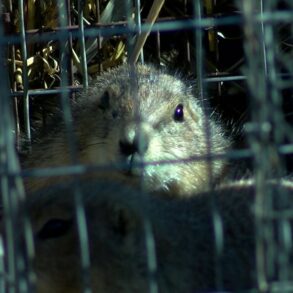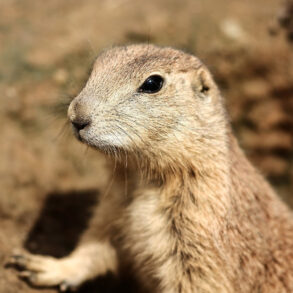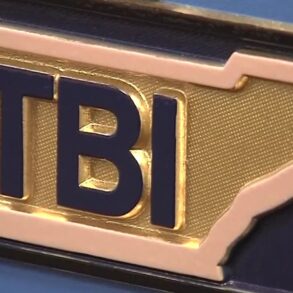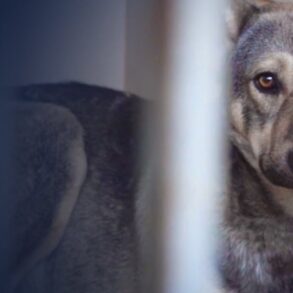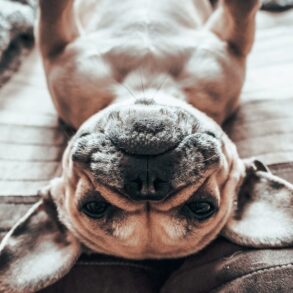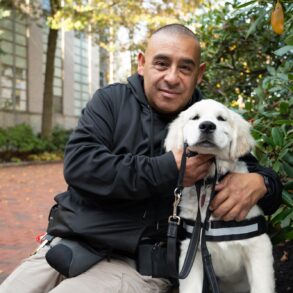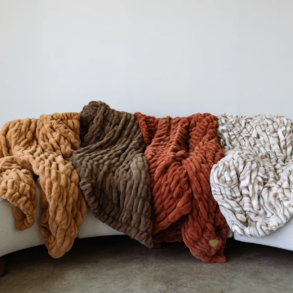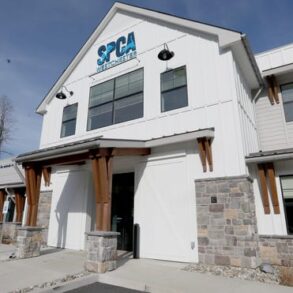The best dog brushes we tested
Brushing your dog with the best dog brush is beneficial for you and your pet. It will keep their coat healthy and prevent painful mats while removing loose hair so you don’t have to vacuum (quite) as much. It can also be a bonding opportunity for you and your pup.
“The benefits of regular brushing include reducing tangles, preventing matting and mitigating shedding for those breeds where shedding is an issue,” says Julia Benning, certified fear-free dog groomer and advisory board leader at grooming franchise Well Groomed Pets.
For maximum effectiveness and comfort, it’s important to have the best dog brush for your pet’s particular coat type. Medium- and long-haired dogs need a slicker brush and/or metal comb, while short-haired pets benefit from a curry brush. To find the best options in each category, I consulted with a dog grooming expert and tested 16 dog brushes to find the best grooming tools for at-home use.
The Chris Christensen Big G Slicker Brush is highly effective on different dog coats, pulling loose hair and gently working out knots with its densely packed pins. Plus, every dog we tried it on seemed to love how it feels.
Recommended by grooming professionals, the Kong Zoom Groom is a rubbery curry brush that proved highly effective on dogs with short hair. It also works well wet, helping to massage shampoo into your dog’s coat.
The Chris Christensen Buttercomb Fine/Coarse Comb is great for finding hidden knots or grooming curly Doodle hair. It’s well-balanced and comfortable to hold and has fine and coarse tines you can easily switch between.
For everyday grooming, the Hartz Groomer’s Best Combo Dog Brush is a double-sided pin brush that’s inexpensive yet effective. Its stainless steel pins are ideal for longer hair, while the nylon bristles work well on short coats too.




The Chris Christensen Big G may be more expensive than other slicker brushes, but it was the most effective model of all the options I tested. This tool is often used by professional groomers and it has noticeably more pins than other slicker brushes with longer angled metal bristles. This made the brush more effective at pulling loose hair and working out tangles from medium- and long-haired coats. After several weeks of testing, I’ve officially added it to my list of must-have grooming products for my two Golden Retrievers.
I tested the Big G on my two dogs: My male, Ace, has a classic “show” coat with long, straight hair on his chest and tail, while my female, Addy, has a shorter, wavy coat. The brush worked phenomenally on both, easily pulling out three or four brushes full of loose hair in less than 10 minutes of work — most other brushes only yielded half as much.
It also did a great job removing tangles from Ace’s tail, and he actually sat still while I brushed it out. He’s usually quite indignant when I work on his tail and undercarriage, so I was surprised at how much he seemed to like this particular brush. I also used the Big G on my parent’s Anatolian Shepherd, who has a thick double coat, and it worked just as well, removing tons of her loose undercoat extremely quickly. She also seemed to love how the brush felt and even rolled over so I could groom her stomach and legs.
This brush is great for everyday grooming and the design is also amazing for finding ticks in my dogs’ fur. I tested the brush during the height of deer tick season in New England and its tightly packed, angled pins were incredibly effective at pulling the tiny insects from their coats after hiking. Even if a tick had started climbing down toward the skin, the brush scoops them back out and traps them inside the maze of bristles — no other brush I tested did this as effectively. Now, a quick brush with the Big G is part of our daily post-walk routine. I will say it’s slightly tricky to get the creepy crawlers out of the brush, though. I usually waited for them to crawl to the edge or pulled them out along with a wad of hair.




The Big G has a lightweight design that’s comfortable to hold, and the handle has a matte plastic finish that offers a non-slip grip. Because the pins on it are long and thin, there is a chance they get bent out of shape if the brush is dropped or manhandled but after multiple weeks of near-daily use, mine was still in perfect condition. So, as long as you treat it well, I think it will last multiple years. The brush comes in three sizes for different dog breeds, and while it is an investment, I can’t recommend it enough for anyone with a medium- or long-hair pooch.




For dogs with short hair, the Kong Zoom Groom was highly recommended by grooming professionals: “My go-to curry brush is the Zoom Groom brush, as its soft rubber teeth are long enough to reach under a thick coat and down to the skin,” says Benning. After testing this brush on my in-laws’ Mastiff, Lola, I wholeheartedly agree with the recommendation. The brush was comfortable to use and effective both dry and wet, and it’s hard to beat its budget-friendly price.




When I tested this brush on Lola, who has short, coarse hair, my in-laws were amazed by how much she liked it. They said she doesn’t generally like being brushed but she happily presented her butt to me so I could run the Zoom Groom through her fur. In just a few strokes, there was a full brush of hair collected in the rubber bristles, and moving the brush in a small circular motion pulled up even more loose fur. While there’s no handle on this curry brush, the rubbery material provides a comfortable, non-slip grip that fits comfortably in my hand. The bristles were a bit dirty when I finished brushing Lola but they came clean easily with soap and water.
I also used this brush to bathe Addy, as it’s designed to be used wet. The Zoom Groom distributed shampoo through her coat and down to her skin. It was also useful for removing any lingering residue from her coat when I rinsed her off. The only thing I didn’t like about using the brush wet is that hair tends to stick to the rubbery surface, which then got stuck to my hand. Still, it was nothing a quick rinse couldn’t fix.




I tested three curry brushes and the Zoom Groom has a similar design to the Frisco Bone Curry Brush, which is slightly cheaper. The two brushes look similar, have the same soft rubber bristles and can be used wet or dry, but the Zoom Groom outperformed the Frisco in one key area: capturing loose hair. While the Zoom Groom trapped most of the hair inside its bristles, the Frisco curry brush often just pushed the hair onto the floor, forcing me to bring out the vacuum after use.
Whether you have a short-haired dog or want a brush to use during baths, the Zoom Groom is inexpensive and effective. Plus, dogs seem to love it, which can make the grooming process much easier.




For dogs with hair prone to tangles or mats, the Chris Christensen Buttercomb Fine/Coarse Comb is a great tool for finding knots while grooming. After testing three popular metal combs, this model stood out as the top choice, as it’s well-made, versatile and more comfortable to hold than others. It’s also well-balanced and highly durable, so while it costs a bit more, it’s a tool you’ll use for many years.
This style of dog comb is frequently recommended for poodle mixes, whose coats can be tricky to brush but it can also be used on other long-haired dogs. I tested the Chris Christensen comb on Ace’s tail, chest and undercarriage, where he has long hair that gets knotted easily. While other combs were oversized and a bit cumbersome to wield, this comb is a comfortable length while still providing plenty of room to work. I particularly liked that half of it has coarse tines with more space between them. This made it easy to do an initial pass to locate big knots, then I could switch over to the fine side of the comb for a more thorough search. The comb’s rounded teeth were easy to pull through Ace’s hair without snagging, and with the help of the Big G slicker brush, it made quick work of any problem areas in his coat, removing snarls with a few gentle strokes.




The Chris Christensen comb is exceptionally well-made compared to the other metal combs I tried. It has a solid brass core, flat spine and steel teeth, and a more substantial weight than products like the Andis Comb. It’s durable enough that you can drop or bang it without causing any damage, and I suspect it’s the type of too you buy once and use forever.




For quick, everyday grooming, the Hartz Groomer’s Best Combo Dog Brush is a budget-friendly option that works on all types of dogs. Its dual-sided design incorporates two brushes into one — there’s a pin brush that was great for cleaning up my Golden Retrievers, while the reverse is a stiff-bristled nylon brush that works well on shorter hair. The brush is comfortable to hold thanks to its rubbery grip, and it’s more versatile and just as effective as other expensive pinbrushes we tried out.
The stainless steel pins on this brush have rounded “safety tips” on the ends, which are more gentle on your dog’s skin than the metal bristles of a slicker brush. While my dogs didn’t mind being brushed with a slicker, I could tell they enjoyed this brush more, as they would often come back over to me after I dismissed them, presenting their butts for additional brushing.
Despite its low price, this brush was also impressively effective, and I was consistently able to pull up three full brushes of hair in around 10 minutes of use. It wasn’t quite as effective as a slicker brush for removing tangles, but I still got most of them out if I worked carefully in small strokes. I also tried the bristle side on Lola’s short coat, and it did a good job of getting loose hair and dirt off while leaving her looking fresh and shiny. The only downside is that it’s much more difficult to clean off that side of the brush.




The Hartz Combo Brush has finger divots on the handle and a rubber grip, making it comfortable to hold, but because the head is double-sided, it’s heavier than other brushes. This did cause my hand to hurt when I used it for longer periods, so I don’t think this brush is the best for everyday grooming. It also may not last as long as others — I’ve had hair brushes like this before and the pins tend to come loose over time. However, for $8, it’s not a tool I’d expect to last forever anyway.
How we tested




To find the best dog brushes, I tested 16 products across five common categories: slicker brushes, curry brushes, pin brushes, metal combs and undercoat rakes. I tested the brushes on four different dogs, including my two Golden Retrievers, a double-coated Anatolian Shepherd and a short-haired Mastiff.
The following are all the tests I ran before selecting the best product in each category.
Design
- Size: While I tested these brushes predominantly on larger dogs, I made sure to evaluate the size of each brush and note if it would be suitable for smaller dogs, too. I also noted which brushes come in multiple size options.
- Ergonomics: While using each brush, I paid attention to how it felt in my hand. Was it heavy or bulky? Is the handle comfortable to hold? Is the grip non-slip? I also assessed whether the brushes caused fatigue after being used for 10 minutes.
- Ease of cleaning: After testing each brush, I cleaned the hair out of its bristles, noting whether it was easy or not. If the brushes got dirty during testing, I washed them with soap and water to see if they were easy to clean.
- Durability: I assessed the quality of each brush, noting whether the materials felt durable and if there were any signs of damage after multiple uses.
Effectiveness
- Performance: I used each brush at least twice, testing them on multiple dogs. While brushing, I noted how much hair they removed and whether they could remove tangles.
- Versatility: Not all dog brushes are well-suited for different types of coats, so I paid attention to which products were the most versatile.
- Comfort: While using each brush, I paid attention to the dog’s body language. Using tips from professional groomers, I looked for signs that the dogs were uncomfortable, as well as signs that they were particularly enjoying a certain brush.
Value
- Price: I looked at average prices for each style of brush and then compared where each tested product fell within that range. Some products were on the low end, while others cost much more than average.
- X-Factor: For more expensive brushes, I took into account special features that could justify the higher price point. Is it particularly effective or durable? Does it have a feature that other options lack?
- Longevity: I also considered the expected lifespan of each brush compared to its price. Some brushes were especially durable and would likely only need to be purchased once, helping to justify a higher price point.
Everything to know about dog brushes
There are several different styles of dog brushes, and it’s important to choose the right style based on your dog’s coat. “Choosing the right brush is crucial to a pain-free grooming experience,” explains Benning. “For example, a slicker brush may feel too rough on a short-coated dog like a Labrador.” The following are the most popular types of dog brushes and how they’re used.
Slicker brush




Slicker brushes like the Chris Christensen Big G are the top-recommended tool for dogs with medium or long hair, and they’re effective on curly and wiry coats. “This metal brush with many small teeth detangles the fur of long-coat dogs and removes the undercoats of medium- and long-coat dogs,” says Benning. These brushes are also great for poodle mixes like Labradoodles or Goldendoodles.
Pin brush




Pin brushes are similar to human hair brushes, featuring metal pins on an oval head. They tend to be quite affordable, and many have rubber caps on the end of the pins to prevent them from scratching your dog. For this reason, pin brushes are a good choice for beginners but they’re not as effective as slicker brushes for detangling and removing dead hair.
Curry comb




A curry comb should be your primary grooming tool if you have a short-haired dog like a Labrador or Pitbull. “This is a soft, typically round rubber brush used on short-coat dogs to help remove dead hair,” says Benning. Because they’re typically rubber, curry combs won’t scratch your dog’s skin, and they can also be used wet, helping to work shampoo into your dog’s fur for a deeper clean.
Metal comb




Add a metal comb to your grooming toolkit if your dog’s coat is prone to knots or mats. “It is important to use a metal comb to find tangles in your dog’s coat,” explains Benning. “The metal comb should not be used to try to detangle, but it helps identify areas where there are tangles that a brush might pass over.”
She notes that combs are a particularly important tool for any type of Poodle mix: “Because Doodles have such a difficult coat to maintain, purchasing a high-quality comb is well worth the investment.” With a metal comb, you’ll be able to easily find knots in your Doodle’s coat, then brush them out to prevent matting.
Undercoat rake




An undercoat rake can help remove dead or loose hair if your dog sheds heavily. These brushes have a row of hook-like metal tines that penetrate your dog’s undercoat without disturbing the top coat. “These tools are important for double-coated breeds like Huskies, who may struggle to regulate their body temperature if the dead undercoat isn’t removed,” explains Benning.
However, some undercoat rakes can cause damage to your dog’s fur, especially if used improperly. “Some undercoat rakes have flawed designs and can cut the coat rather than remove it,” warns Benning.
I tested two undercoat rakes for this guide but neither is worth recommending. The first had such closely packed tines that it pulled on my dog’s hair without getting much fur out, and the second ended up cutting the hair, as Benning warned some rakes can do. We’ll be testing more to find an undercoat rake we can recommend.
Other dog brushes we tested
While its design is almost identical to the Big G, the Big K has fewer bristles and isn’t quite as smooth to use.
The only real difference between the Chris Christensen Big G and Big K is the number of bristles on the brush. The Big K has fewer bristles, which may be beneficial if your dog has very thick hair, but overall, I found the Big G was smoother to use and more effective for removing loose hair. Still, I don’t think you can’t go wrong with either option if you’re looking for a well-made slicker brush.
For dogs with sensitive skin, this slicker brush has plastic caps on its bristles, making it less likely to scratch them.
Tweezerman recently launched a line of pet products and I was pleasantly surprised by the slicker brush, which comes in two sizes. The long, stainless steel bristles have plastic safety caps on the end, which makes it a bit gentler to use than other slickers, and it was able to remove a few full brushes of hair in just a few minutes of use.
However, this slicker wasn’t as effective at removing tangles, as knots often get snagged on the safety caps, which can pull on your dog’s hair. Additionally, I found the handle to be quite bulky.
This slicker has mid-length bristles that don’t capture as much fur, and I found them to be more prickly than other brushes.
The bristles on the Andis Slicker Brush are around half the length of the Chris Christensen Slicker’s, and they weren’t nearly as effective. After 10 minutes of brushing, I didn’t even have a full brush of hair. The metal bristles are also thicker and more prickly, which may irritate if you use too much pressure while brushing.
With pitifully small bristles and a cheap plastic handle, this brush was the worst of all the slickers I tested.
While I like this brand’s dog nail clippers, the same can’t be said for its slicker brush. The bristles on this brush were so short that they barely penetrated my dog’s coat, and after several minutes of use, it didn’t pull up any significant amount of hair. It’s also made from cheap plastic with an uncomfortable handle.
This curry brush was effective and comfortable to use, but it didn’t capture as much hair as our overall winner.
The Frisco Curry Brush is another worthwhile option for bathtime or dogs with short hair. It performed very similarly to the Kong Zoom Groom — the rubber bristles are roughly the same size, and the two brushes are made from similar materials. The main difference I could find was that this brush doesn’t capture hair quite as well. Instead, loose hair ends up on the floor after use. Still, it works well and might be worthwhile if you brush your dog outdoors.
The bristles on this curry brush are short and stiff, making it noticeably less effective than others.
The Furminator Curry Comb is more comfortable to hold than others, as it has a strap on the back where you can tuck a few fingers. However, its rubber bristles are short and hard, so it’s not very effective at penetrating fur, even on short-haired dogs. Lola liked how this brush felt, but it didn’t do a good job picking up loose hair, nor was it effective on tangles.
This pin brush seemed durable, but its wooden handle was uncomfortable and didn’t work better than cheaper models.
The Chris Christensen Pin Dog Brush stood out from the rest thanks to its extra-long pins, and my dogs enjoyed being brushed with it. The brush could pick up lots of dead hair from their undercoats, and it felt well-made and durable. That said, the brush is significantly more expensive than the other pin brushes we tested, and its flat wooden handle was uncomfortable to hold after a few minutes.
While its handle is one of the more comfortable options, this pin brush didn’t stand out in terms of performance.
The Andis Pin Brush had one of the most comfortable handles of all the brushes I tested — it’s ergonomic and has soft silicone grips on the sides to prevent slipping. But it didn’t stack up in terms of brushing performance. It only picked up about half as much as the other pin brushes, and I noticed that a lot of the hair was just being pushed around and ending up on the floor, not captured in the bristles.
This metal comb was too large to hold comfortably, and I didn’t like that the fine tooth section is so small.
While not terrible, the Andis Stainless Steel Comb wasn’t as comfortable as the Chris Christensen model. It’s 10 inches long, which makes it a bit unwieldy, even on large dogs, and its rounded spine wasn’t as comfortable to grip. Plus, its fine-tooth section is only a few inches toward the top of the comb, giving you less room to work with. It will get the job done, but it’s not as well-designed as the higher-end model.
The handle makes this comb more comfortable to wield, but there are so few tines that it takes forever to brush a large dog.
The Evolution Dog Comb is the only option I tested with an actual handle, which makes it easier to hold. However, it has only a few inches of tines to work with, and they’re so close together that it was tough to run them through my dogs’ fur. It might be a passable option if you have a small-breed dog, but for medium and large breeds, it would take a long time to go over them with this comb.
The teeth on this rake are tightly packed together, making it hard to brush without tugging on their fur.
Like other brushes from Andis, the Fine-Tooth Deshedding Rake has a comfortable ergonomic handle, but its tines were so close together that it was hard to pull through my dogs’ coats. I could tell it was uncomfortable for them, as I had to tug quite a bit to use it. I also tried it on Lola’s short hair, but it barely removed any of her undercoat. It might work on dogs with fine fur, but it’s not the best option for thick-coat breeds.
This undercoat rake seemed to cut my dog’s top coat as I brushed — a common problem with undercoat rakes.
This undercoat rake from Mars has more space between the tines, and initially, I thought the design was promising, as it easily passed through my dogs’ coats and pulled out lots of hair. However, as I brushed, I noticed it was collecting hair from my dog’s top coat, as well. Upon closer examination, it appeared the brush was cutting the hair — a common problem with undercoat rakes that can damage your dog’s coat in the long run.
FAQs
Meet our expert
For this article, we consulted the following expert to gain their professional insights:
- Julia Benning, certified fear-free dog groomer and advisory board leader at grooming franchise Well Groomed Pets.
Why trust CNN Underscored
CNN Underscored editors thoroughly test all the products we cover and provide full transparency about how we test them. We have an experienced team of writers and editors with many years of testing experience and ensure each article is carefully edited and products are properly vetted. The writer of this guide, Camryn Rabideau, has written several pet-focused pieces for CNN Underscored, including guides to the best winter dog coats, dog collars and cat litter boxes.
We talk to top experts when it makes sense to ensure we are testing each product accurately and speaking about the pros and cons of each item. For this article, we spoke to a professional groomer who helped explain the different types of brushes and which types of dog hair and fur they were suited for.
This post was originally published on this site be sure to check out more of their content.





